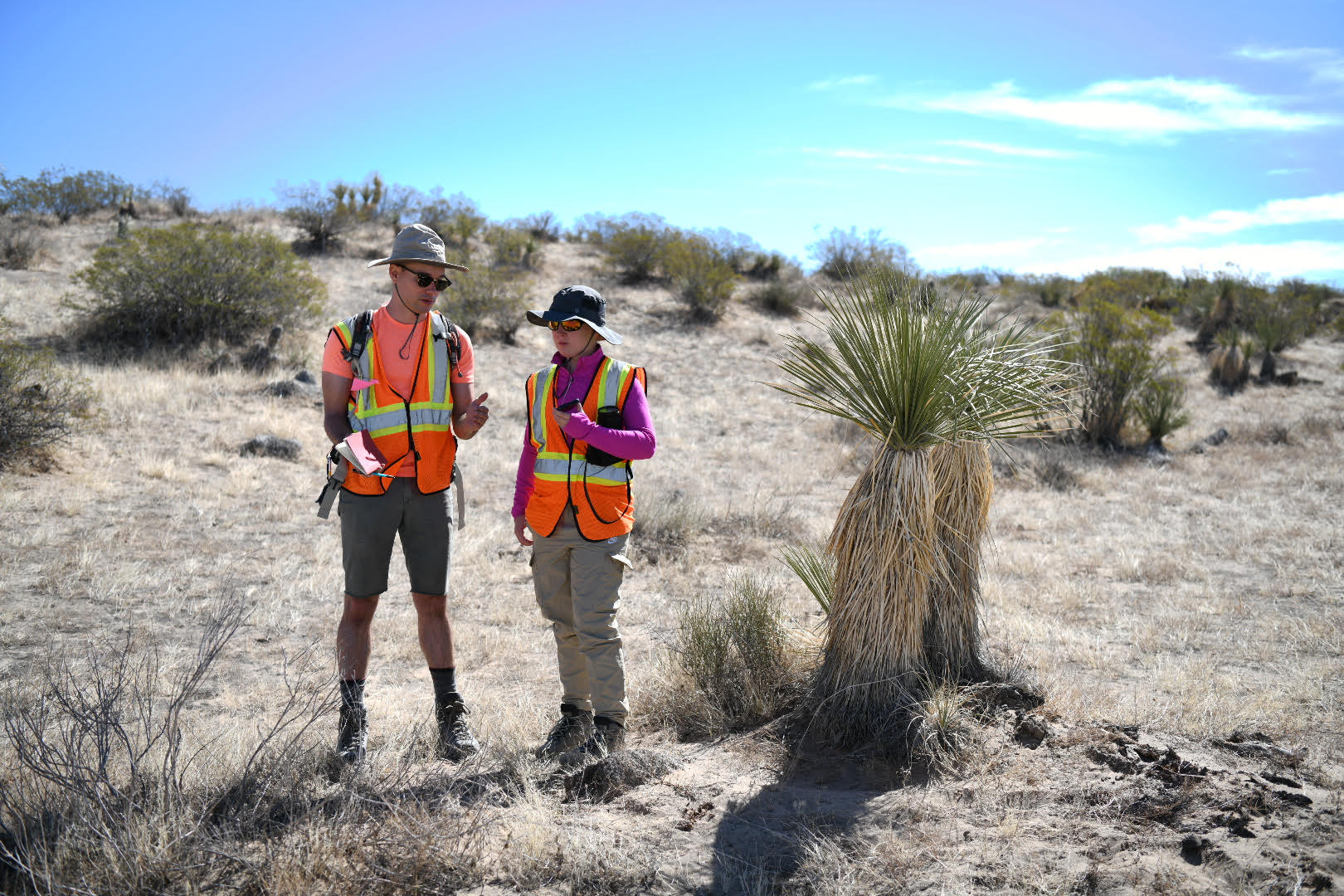Strolls Through a Volcanic Crater Help Astronauts Prepare for Walks on Moon
“Houston, are you seeing this?” Caroline Kostak said into the GoPro propped on her shoulder.
The NASA engineer held up a rock she found during a traverse and showed it to the camera, twisting it and examining it in her hands. She’s usually a researcher for the Remote, In Situ, and Synchrotron Studies for Science and Exploration (RISE2) Program, but today she’s acting like an astronaut on the Moon collecting rock samples to bring back to Earth.
Kostak and almost every other scientist, graduate student and student journalist on the RISE2 trip to Potrillo Volcanic Field in New Mexico in late April of 2022 are the test subjects for the Extravehicular Activity (EVA) team’s research. Their mission is to use data and maps gathered prior to the trip in a series of hypothetical space walks to find out what information is useful, accessible and necessary in reality.
“The whole RISE2 program is building up to a series of analog tests using astronauts,” Zach Morse, …, said. “So on one level the data helps show them what geologic information should be integrated into the EVA planning for real in Artemis…The other theme of RISE2 is how do you integrate all these different data sets and then visualize them in an efficient way.”
RISE2 is part of yearslong research devoted to the Artemis Project, an ambitious plan to send a crew of humans to the Moon by 2025. Scientists use sites on Earth as models – or analogs – to study to prepare for astronauts to experience the environments on the moon and other planets.
The research at Potrillo Volcanic Field in New Mexico was done at two analog sites with physical similarities to the Moon. At Kilbourne Hole and Hunt’s Hole, the test subjects pretended to be astronauts for an hour and were given missions on their pretend space walks. As they arrived at each station on the space walk, the person leading the team provided datasets for the area they arrived in along with a set of options of what they could do.
The first EVA took place at Kilbourne Hole, an almost two-mile-long volcanic crater. Two “astronauts” started their mission at the top of the rim where the person leading the EVA introduced them to the Moon and the mission of the day – to find three specific minerals, olivine, quartz and clinopyroxene, to take back to Earth and observe the landscape and report their sights orally all throughout the traverse.
To test the rocks for their minerals, the team walks around with a 3D printed GRX instrument. A real GRX could calculate the chemical composition of the rock, but the 3D printed one is just for show. Each time a subject pretends to use it, those assisting on the test pull up a dataset from an iPad which shows percentages of the chemicals within the sample as well as the quality of the test. This informs the astronauts on what to do next – collect the sample, do another test or move on to the next station.
Throughout the trials, each trained geologist was paired with someone with less geology knowledge. Reed Hopkins, a second-year doctoral student in geosciences at Stony Brook University, was paired with a journalism student from Stony Brook University. Hopkins is an expert on HSI data, or hyperspectral imagery, since he collects it with his team during RISE2 under the auspices of geoscientist and professor Deanne Rogers of SBU.
Since astronauts are not always scientists, the geologists for the most part took a step back and let their untrained partners observe. They lent their thoughts and observations to bolster the mission, but not to supercede the non-experts, to make the traverse a little more realistic.
“I took some of the data for the HSI… so when we got to that part, I had to like, not be biased,” Hopkins said. “So I let my partner kind of interpret the data, because if I interpreted it, I'm more likely to interpret it the way a HSI person would interpret it. And I knew things about the data that weren't obvious from looking at it.” . While there were no time constraints on these tests, in a real-life Moon traverse, time is of the essence. Astronauts only have so much oxygen, therefore a limited amount of time, to read and interpret data.
The next phase of the EVA team’s tests will have not only time constraints, but also a limited amount of samples that can be collected. These components will add pressure to the tasks at hand, and the type of data/tools that are relevant to them will become more evident. Overall, the researchers are expecting the experiment to be higher fidelity.
“This is, you know, kind of one of the first opportunities where we try and integrate science into an operational context,” said Cherie Achilles, the interim field lead for RISE2. “And if you've been following EVA’s you know we did not achieve that all the time and so that's exactly what we wanted to learn.”
Astronauts will be running through the EVAs next, emulating the space walks they will take in 2025 on the Artemis mission.
© 2025 ReportingRISE. All rights reserved.

